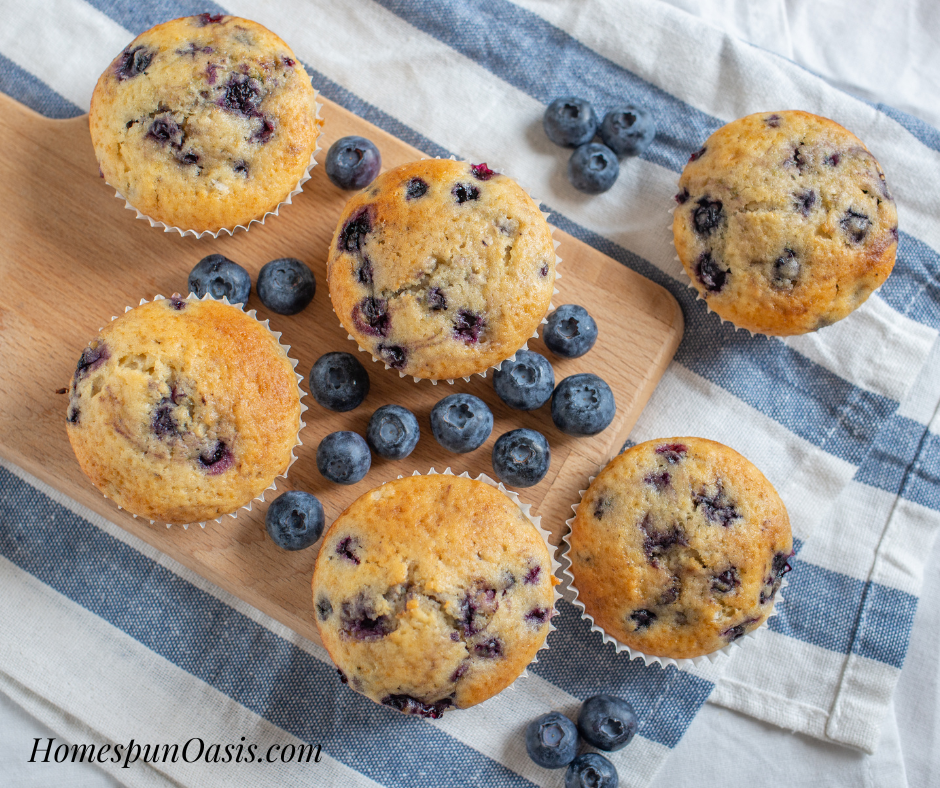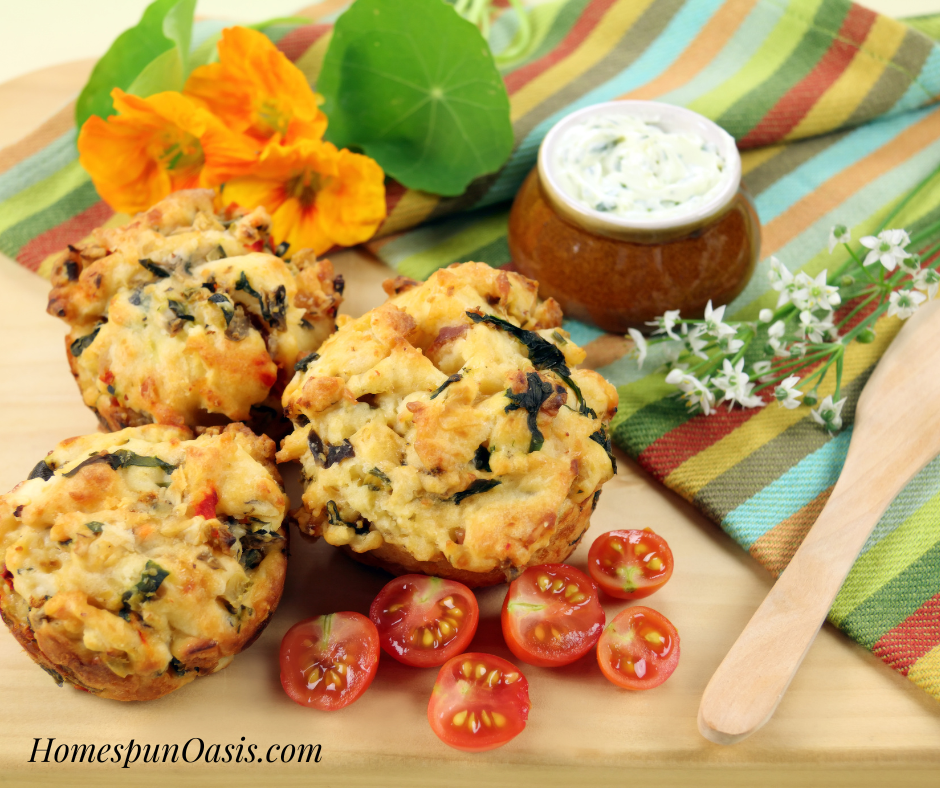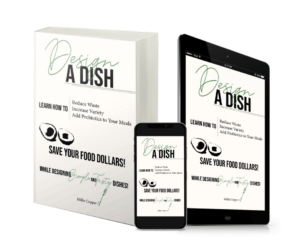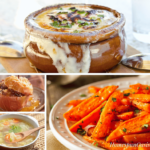This page may contain affiliate links. As an Amazon Affiliate, I earn on qualifying purchases. Please see our disclaimer for more information.
This recipe was originally published in October 2009.
I love a good muffin! Having an easy and adaptable muffin formula is an important component in my kitchen. This basic muffin recipe works with any ingredients you have on hand and can be customized for whatever flavor you’re craving.

In The Complete Tightwad Gazette by Amy Dacyczyn, the author shares a basic muffin recipe that uses common ingredients and can be customized to your own tastes or ingredients that are abundant to you.
When we made the transition to traditional foods, I experimented with the original recipe to allow for soaking. A few tweaks and voila! My muffin formula has been modified to incorporate soaking the grains (to aid in digestion and reduce phytic acid and other antinutrients) and uses healthy fats.
Cooking with formulas really helps us keep our food budget under control and make the most of our food dollars—as well as reduce waste, increase variety, and even add extra probiotic ingredients to our meals. If you love the idea of this, be sure to check out my Design a Dish book for even more cooking formulas.
I originally shared my Design a Muffin idea here, on Homespun Oasis. But I was quite honored when Wardee from Traditional Cooking School tweaked my version and shared it on her blog, plus included it in her Fundamentals eCourse.

Let’s Design a Muffin!
Required Ingredients
Grain
Use 2 to 2 ½ cups whole wheat flour. Or substitute oatmeal, cornmeal, or rye flour for the whole wheat flour. My best results come from 1 cup of whole wheat flour and 1 cup of old-fashioned rolled oats.
Liquid
Use 1 cup of liquid. You want a liquid that will do two jobs. First, it will act as the liquid to bind all of your dry ingredients together, just like in any muffin. Second (and maybe more importantly), you want a liquid that will be slightly acidic in order to help reduce the phytic acid and other antinutrients that are naturally occurring in your grain(s).
You could use yogurt, kefir, or buttermilk for your already acidic liquid. Or you can use milk and an addition such as whey, kombucha, apple cider vinegar, kefir, or lemon juice. Add 1 tablespoon of acidic medium for each cup of liquid.
You can also do what I often do and use water for half of your liquid. For example, use ½ cup yogurt and ½ cup water to total 1 cup; or ½ cup milk, ½ cup water, plus 1 tablespoon whey. You can use plain water plus your acidic medium for a less rich but still delicious muffin.
Fat
Use ¼ cup melted butter or coconut oil. Or you can substitute an all-natural nut butter for all or part of the fat. Another thing that works well is using a “wet addition” for all or part of the fat. For a savory muffin, you might try olive oil.
Egg
Use 1 egg. This goes back to using the best-quality ingredients you can afford. Pastured or free-range eggs are great if possible.
Sweetener
Use up to ½ cup of a natural sweetener. You could use Sucanat, Rapadura, honey, maple syrup, blackstrap molasses, evaporated cane juice, or a combination of any of these.
Keep in mind that honey, maple syrup, and molasses are liquid. Use caution when using these in combination with wet additions so your batter does not become overly wet. I’ve had excellent result using as little as 2 tablespoons of sweetener, especially when combined with additions that are on the sweet side. When using honey, I always use less than I would of something like Sucanat. If making a savory muffin, use only 2 tablespoons or eliminate it completely.
Baking Powder or Baking Soda
Equal amounts of both work well for me—1 teaspoon of each. You could choose to only use baking powder, but I find the soda works well with the slight acidity of the soaking liquid.
Sea Salt
Use ½ teaspoon of sea salt.
You could stop here and make your muffins plain. I’ve made plain muffins before, and they turn out great. But one of the really fun things about this basic muffin recipe is the ability to customize the muffins to the ingredients you have on hand.

Optional Additions
These can be used in any combination you wish. This is a great way to use up small amounts of leftovers.
Dry Additions
Chopped crispy nuts (almonds, peanuts, pecans, walnuts), sunflower seeds, raisins, shredded coconut, etc. Poppy seeds are a nice dry addition. I usually use 2 tablespoons.
Moist Additions
Blueberries, chopped or shredded apple, freshly shredded zucchini, shredded carrots, etc.
Wet Additions
Pumpkin puree, applesauce, mashed banana, cottage cheese, cooked and mashed sweet potatoes, cooked and mashed carrots, frozen zucchini that has been thawed and drained, home-canned fruit that has been drained and cut into chunks, fruit juice (lemon, lime, orange; as a flavoring only).
*Note: When using wet ingredients, your muffins can get quite wet. This could cause the need for additional baking time. To help eliminate this, I keep the wet ingredients to no more than ½ cup.
Spices
Use 1 to 4 teaspoons, depending on your preferences. Use one or a combination. Cinnamon, nutmeg, ground ginger, cloves, grated orange peel, grated lemon peel, etc. all taste great in muffins.
All-Natural Fruit Spreads
Here is an idea for a nice change of pace. Fill your muffin tins half full with plain batter. Add a teaspoon of fruit spread and then top with 2 more teaspoons of batter (my children love this).
Savory Muffins
These make a nice accompaniment to a simple soup dinner. Use only 2 tablespoons of sweetener or omit it entirely. I’ve had excellent results using a combination of whole wheat flour and rye flour, or whole wheat flour and cornmeal (1 cup each).
For additions, use things like shredded cheese (1/2 cup), a few strips of fried and crumbled bacon (we would use turkey or beef bacon), or 2 to 3 tablespoons of any or all of the following: minced or grated onion, shredded zucchini, finely chopped, leftover cooked vegetables (I like broccoli), Parmesan cheese, or fresh herbs of your choice. If using dried herbs, use 1 to 2 teaspoons.

The Method for the Basic Muffin Recipe
Soak It
Combine your choice of grain(s) and your liquid in a bowl. Don’t forget your acidic medium if using milk or water. Allow to soak (covered) at room temperature for a minimum of 7 hours.
Mix In
After your soaking time is up, mix in your egg and oil. The first time you make this, it is going to seem all wrong. The batter that has soaked all day will be thick and seem very hard to mix. I usually mix in one egg first. After that is well blended, I slowly add any additional eggs (when making multiple batches) and the oil. Don’t be tempted to add additional soaking liquid when you start out. You want that batter to be thick so your muffins turn out with a beautiful amount of rise. I’ve tried a thinner batter, hoping for easier mixing, and ended up with muffin pancakes.
Add any moist or wet ingredients (such as honey, molasses, vanilla, etc.) to this batter. Hold off on adding things like blueberries until the two bowls are combined so they don’t turn to mush. No one likes mush berries.
Separate Bowl
Combine the dry ingredients in a separate bowl. Go ahead and put any spices or dry additions into this bowl.
Combine
Combine the two bowls until mixed. Occasionally, the mixing will be challenging and you might have bits of grain that don’t combine. I don’t worry too much about this and just do the best I can. Your finished product might have spots of a slightly different color, but it’ll still taste great. Stir in any final additions such as blueberries.
Bake
Put your muffins into prepared muffin tins. Bake in a 400-degree oven for 18 to 25 minutes. Your baking time may vary depending on your altitude and how wet your batter is. I usually set the timer for 18 minutes and then check them every 3 to 5 minutes afterward until a toothpick comes out clean.
Double Up!
Save energy and time by making a double batch. These keep very well when covered or can be stashed in the freezer for future use.
Tasty Combinations
After several years of designing our muffins, we’ve developed some favorites.
- Lemon Poppy Seed: When we want muffins or breakfast cake and I have nothing on hand that needs to be used up, I make lemon poppy seed muffins. Use 2 tablespoons poppy seeds, 2 tablespoons lemon juice, 1 teaspoon ground cinnamon, 1 teaspoon ground ginger, and ½ teaspoon of nutmeg. Simple and delicious!
- Peanut Butter Banana: Bananas that are too ripe are very common for me. (Seems I can never accurately estimate the banana consumption at my house—either I buy too few and they are gone too quickly, or too many and they become too ripe). My additions then become overripe bananas and peanut butter. I usually replace half of the fat with peanut butter (1/8 cup peanut butter and 1/8 cup butter or coconut oil). This makes a very tasty combination.
Now that you are familiar with the components of the basic muffin recipe, here is your formula. Let the experiments begin!

Basic Muffin Recipe
(makes approximately one dozen)
- 2 to 2 ½ cups grain
- 1 cup buttermilk, yogurt, kefir, or milk with 1 tablespoon acidic medium
Combine your grain(s) with your liquid of choice. Cover with a cloth and let sit at room temperature for seven hours or overnight.
After your soaking time has completed, add and mix well:
- Up to ¼ cup fat
- 1 egg
- Up to ½ cup wet additions or 1 ½ cup moist additions (keep total additions under 1 ½ cup; do not add berries at this time)
In a separate bowl, combine:
- Up to ½ cup sugar
- 1 teaspoon baking powder
- 1 teaspoon baking soda
- ½ teaspoon salt
- Up to 1 ½ cup dry additions (keep total additions under 1 ½ cup)
Combine the two bowls until mixed. Add in berries or any other items you did not wish to become mush.
Bake in a 400-degree oven for 18 to 25 minutes. Your baking time may vary depending on how wet your batter is and your altitude.
Basic Muffin Recipe Variation: Breakfast Cake
Here’s a great idea! Put the batter in an 8-inch square pan or a loaf pan and sell it to your family as “Breakfast Cake.”
No need to wash each little muffin tin. 😉 Use a 9×13 cake pan for a double batch. Keep an eye on your quantity when pouring into pans. Sometimes, your choice of ingredients can result in a batter that makes more than will fit in a pan without running over. Fill pans no more than ¾ full to be safe. When the batter exceeds the pan, put the remainder in muffin tins.
Muffins and Breakfast Cake are not just for breakfast. They make a wonderful snack or light dessert!
Want More Cooking Formulas?
Design a Dish: Save Your Food Dollars!
Would you like to learn great methods to reduce food waste? What if you could enjoy one meal for “free” each week?
Design a Dish will teach you how to make wonderful, simple dishes you can prepare day in and day out. You’ll be amazed at how easy it is to nourish your family with these tasty dishes!
Inside Design a Dish, you’ll discover:
- How to drastically reduce food waste and lower your grocery bill
- How cooking with formulas, instead of recipes, will help you design dishes with ingredients that are abundant to you
- Simple methods for cooking nutritional meals from scratch that the whole family will love
- And much, much more!
Design a Dish is packed full of affordable, easy-to-follow cooking formulas and recipes. If you’re looking for a way to feed your family a healthy, real food diet on a small budget, this book is for you.
Buy Design a Dish today, and learn how to make mealtime easier—for good! *Use coupon code Muffins to save 25% off the eBook when you buy directly from the Millie Copper Store.












>I love having a master recipe that you can change at whim. Thanks for sharing!
>I REALLY like master recipes. I'm going to give this one a try! 🙂 Thanks for sharing your tweaks – I like seeing what has worked for you.
>The muffins look really great!
Millie, you won't believe this… as if we don't have enough in common already… I have the same bread box!! Check out the pic in this blog post: http://prairiesun.wordpress.com/2009/03/22/spicy-pickled-eggs/
Yours is in much better condition. Do you have anything that matches it? I have a napkin holder.
>Marg,
That is so weird that we have the same box! Joe bought it for me as a gift for Valentine's Day one year from a little antique store. I love it and it is in very good condition. I don't have anything that matches it.